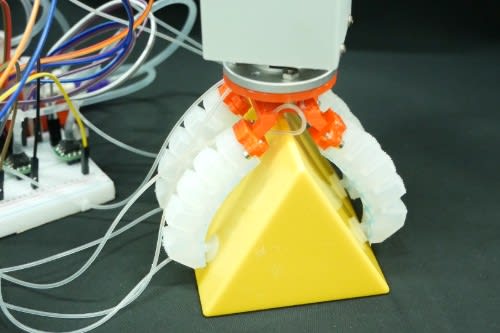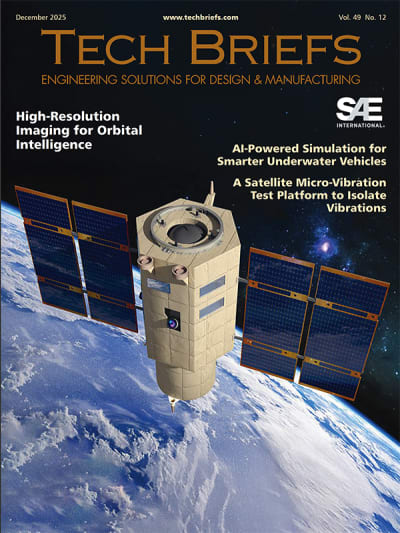
The team from the University of Bristol’s Faculty of Science and Engineering designed a simple yet smart robot that uses fluid flows of air or water to coordinate suction and movement as octopuses do with hundreds of suckers and multiple arms.
The study, published in the journal Science Robotics, shows how a soft robot can use suction flow not just to stick to things, but also to sense its environment and control its own actions — just like an octopus. A single suction system enables the robot to grab delicate items, sense whether it’s touching air, water, or a rough surface, and even predict how hard something is pulling on it — all at once, without needing a central computer.
Lead Author Tianqi Yue explained: “Last year, we developed an artificial suction cup that mimicked how octopuses stick to rocks using soft materials and water sealing.
“This research brings that work on, from using a suction cup like an octopus sucker to connect to objects to using ‘embodied suction intelligence’ — mimicking key aspects of the neuromuscular structure of the octopus in soft robotic systems.”
The suction intelligence works at two levels: by coupling suction flow with local fluidic circuitry, soft robots can achieve octopus-like low-level embodied intelligence, including gently grasping delicate objects, adaptive curling and encapsulating objects of unknown geometries. By decoding the pressure response from a suction cup, robots can achieve high-level perception including contact detection, classification of environment and surface roughness, as well as prediction of interactive pulling force.
This simple and low-cost suction intelligence could lead to a new generation of soft robots that are safer, smarter and more energy efficient. Potential uses include picking fruit gently in agriculture, handling fragile items in factories, anchoring medical tools inside the human body, or creating soft toys and wearable tools that can interact safely with people.
The team is currently working on making the system smaller and more robust for real-world use. They also aim to combine it with smart materials and AI to improve its adaptability and decision-making in complex environments.
“It’s fascinating how a simple suction cup, with no electronics inside, can feel, think and act — just like an octopus arm,” concluded Yue. “This could help robots become more natural, soft and intuitive to use.”
Here is an exclusive Tech Briefs interview, edited for length and clarity, with Yue.
Tech Briefs: What was the biggest technical challenge you faced while developing this octopus robot?
Yue: The biggest challenge I faced in this project was extracting multiple functions from a simple suction flow. Suction flow is typically used solely for grasping in industry, but we managed to explore its additional functions in sensing, control, and actuation.

Tech Briefs: Can you explain in simple terms how it works please?
Yue: We demonstrated two things: first, the suction flow of a suction cup can be used to trigger specially designed valves to autonomously regulate a soft robot's behavior; second, by decoding the waveform of the suction flow, we can extract multiple types of environmental information, including contact, the surrounding medium, the surface roughness, and an estimate of the pulling force.
Tech Briefs: I remember interviewing you last year about the artificial suction cup. How does this octopus robot differ from it?
Yue: Last year, we proposed an adaptive suction cup for grasping irregular objects. That research focused on mimicking the body structure of octopus suckers. In this new work, we focused on the octopus’s neuromuscular structure, specifically studying the coordinated behavior between the suckers and the arms. This provides a simple yet efficient design for intelligent soft robots.
Tech Briefs: The article I read says, “The team is currently working on making the system smaller and more robust for real-world use. They also aim to combine it with smart materials and AI to improve its adaptability and decision-making in complex environments.” My question is: Do you have any set plans for further research/work/etc.? If not, what are your next steps?
Yue: We believe our research opens a new path for designing intelligent, sucker-equipped robots. As stated in the article, our future work aims to miniaturize the lower-level controller so that it can be embedded inside the robot — similar to how neural ganglia are embedded in an octopus’s arm.
Tech Briefs: Do you have any advice for researchers aiming to bring their ideas to fruition (broadly speaking)?
Yue: Focus on 0-to-1 work, rather than doing many 1-to-100 tasks.

